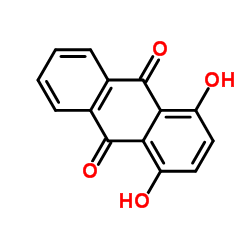Electrospun 1,4-DHAQ-doped cellulose nanofiber films for reusable fluorescence detection of trace Cu2+ and further for Cr3+.
Meiling Wang, Guowen Meng, Qing Huang, Yiwu Qian
Index: Environ. Sci. Technol. 46(1) , 367-73, (2012)
Full Text: HTML
Abstract
1,4-Dihydroxyanthraquinone (1,4-DHAQ, a fluorophore) doped cellulose (CL) (denoted as 1,4-DHAQ@CL) microporous nanofiber film has been achieved via simple electrospinning and subsequent deacetylating, and used for highly sensitive and selective fluorescence detection of Cu(2+) in aqueous solution. As the resultant byproduct of Cu(2+)-contaminated 1,4-DHAQ@CL nanofiber film showed recovered fluorescence by extra addition of Cr(3+) nitrate solution, 1,4-DHAQ and Cu(2+) codoped CL (denoted as (1,4-DHAQ)-Cu(2+)@CL)) microporous nanofiber film has been further fabricated for the detection of Cr(3+) in aqueous solution. It was found that the fluorescence intensity of the 1,4-DHAQ@CL microporous nanofiber film linearly decreases with Cu(2+) concentration ranging from 2.5 × 10(-9) to 3.75 × 10(-8) M, while that of the codoped (1,4-DHAQ)-Cu(2+)@CL nanofiber film linearly increases with Cr(3+) concentration from 2.5 × 10(-9) to 2.5 × 10(-8) M, both with high selectivity over many other common heavy metal ions. The sensing mechanism for Cu(2+) is ascribed to the formation of phenolate between 1,4-DHAQ and Cu(2+), while that for Cr(3+) is attributed to the reversing reaction from Cu(2+)-based phenolate to Cu(2+) and Cr(3+)-based excited complex with recovered fluorescence. The sensitive and selective detection of Cu(2+) and Cr(3+) by using the 1,4-DHAQ@CL and the (1,4-DHAQ)-Cu(2+)@CL nanofiber films was further demonstrated in polluted lake waters, thus indicating their potential applications in environmental monitoring of Cu(2+) and Cr(3+) in polluted water. Additionally, both the 1,4-DHAQ@CL and (1,4-DHAQ)-Cu(2+)@CL microporous nanofiber films are reusable for the detection of Cu(2+) and Cr(3+), respectively, after simple treatment. The design concept in this work might also open a door to the design of effective fluorescence probes for other heavy metal ions.
Related Compounds
| Structure | Name/CAS No. | Molecular Formula | Articles |
|---|---|---|---|
 |
Quinizarin
CAS:81-64-1 |
C14H8O4 |
|
In vitro inhibition of Streptococcus mutans biofilm formatio...
2007-04-01 [Antimicrob. Agents Chemother. 51 , 1541-4, (2007)] |
|
Synthesis and activity of substituted anthraquinones against...
2005-04-21 [J. Med. Chem. 48 , 2822-30, (2005)] |
|
Synthesis of glycoside derivatives of hydroxyanthraquinone w...
2010-03-01 [Eur. J. Med. Chem. 45 , 1001-7, (2010)] |
|
Solvent effects on the photophysical properties of poly[1,4-...
2015-01-05 [Spectrochim. Acta. A. Mol. Biomol. Spectrosc. 134 , 218-224, (2015)] |
|
An investigation of anthraquinone dye biodegradation by immo...
2012-06-01 [Environ. Sci. Pollut. Res. Int. 19(5) , 1728-37, (2012)] |